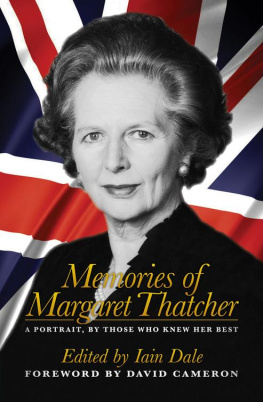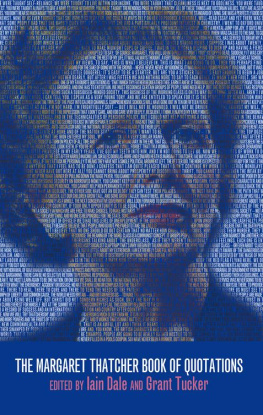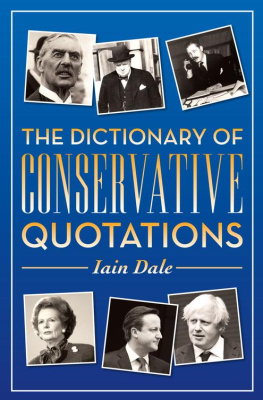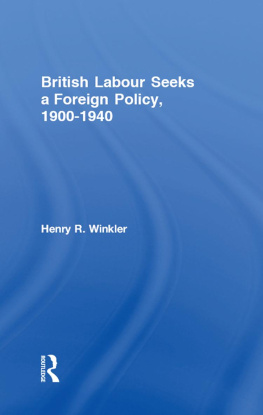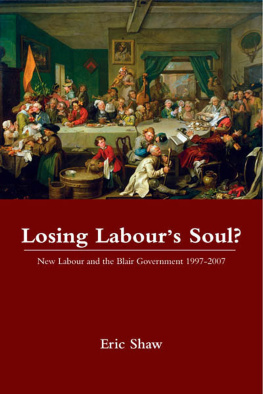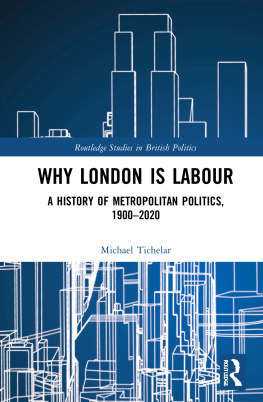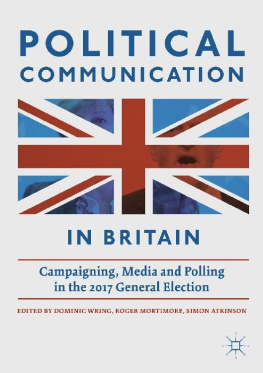LABOUR PARTY GENERAL ELECTION MANIFESTOS 19001997
First published 2000
by Routledge
2 Park Square, Milton Park, Abingdon, Oxon, OX14 4RN
and Politicos Publishing
8 Artillery Row, Westminster, London SW1P 1RZ
Simultaneously published in the USA and Canada
by Routledge
270 Madison Ave, New York NY 10016
Routledge is an imprint of the Taylor & Francis Group
Transferred to Digital Printing 2007
2000 Selection and editorial work Iain Dale
2000 Iain Dale and Dennis Kavanagh
Typeset in Times by RefineCatch Limited, Bungay, Suffolk
All rights reserved. No part of this book may be reprinted or reproduced or utilised in any form or by any electronic, mechanical, or other means, now known or hereafter invented, including photocopying and recording, or in any information storage or retrieval system, without permission in writing from the publishers.
British Library Cataloguing in Publication Data
A catalogue record for this book is available from the British Library.
Library of Congress Cataloging in Publication Data
British political party manifestos, 19001997 / edited by Iain Dale.
p. cm.
Contents: v. 1. Conservative Party general election manifestos / with an introduction by Alistair B. Cooke v. 2. Labour Party general election manifestos / with an introduction by Dennis Kavanagh v. 3. Liberal Party general election manifestos / with anintroduction by Duncan Brack.
1. Political parties Great Britain Platforms History 20th century. 2. Great Britain Politics and government 20th century.
I. Dale, Iain.
JN1121.B78 2000
324.24100904 dc21 9925226
CIP
ISBN10: 0415205905 (hbk)
ISBN10: 0415436729 (pbk)
ISBN: 9780415205900 (hbk)
ISBN: 9780415436724 (pbk)
ISBN Set: 0415205883
In compiling and co-publishing this series of twentieth century General Election manifestos I am conscious that I owe a great debt to F. W. S. Craig, the doyen of political reference book compilers. Before his untimely death in 1989 Fred Craig had published three separate collections of manifestos, the latest containing all manifestos published between 1959 and 1987. As we enter the new millennium it seems appropriate to continue Craigs work by publishing a three volume series containing all the General Election Manifestos of the three main political parties published during the twentieth century.
It should be noted that the publication of an official party manifesto is a relatively new invention. At the beginning of the century the Partys manifesto normally consisted of a statement of policy issued by the Leader of the Party in his election address to his own constituents. Nowadays it is not quite so simple. Manifestos go through umpteen drafts and are carefully worded to appeal to the maximum number of electors. The pictures selected often tell the voter more than the words.
Since 1950 the various political parties have often issued separate manifestos for Wales and Scotland. Space considerations prevent their reproduction.
The manifestos in this collection are reproduced verbatim in their original style. There are naturally changes to the textual layout, particularly for latter day manifestos where the use of pictures is more commonplace.
I would like to thank the Labour Party for their co-operation in this project and all those Labour supporters who have been involved in drafting their manifestos down the years. This book is for them.
Iain Dale
Politicos Publishing
London, 1999
Kavanagh Dennis
General elections are a cornerstone of political democracy. Voters choose between competing candidates and parties for political office. But people need to know what they are voting for and what they are voting against. In the twentieth century the party manifesto has become an indispensable aid in the choosing process. It is a boast of British parties that they are programmatic. They fight general elections on manifestos and, if elected, promise to carry them out. For the most part we think this is a good thing; it lies at the heart of responsible government.
For all their waffly prose and qualified promises British party manifestos matter. More than most such documents in other countries they often lead to action if the party forms a government. In many European states with coalition governments a partys manifesto has to be compromised once it enters government. In the United States a Presidential candidates manifesto could commit his party in Congress and, more often than not, he will not have a party majority there. In Britain, the likelihood is that one party forms a government and will have a majority in the House of Commons. It can deliver on its manifesto.
Manifestos have been particularly important for the Labour Party. When it was founded in 1900 it was a distinctive party. It was created by groups outside of parliament, by trade unions and socialist societies, people who were largely excluded from political society or the electorate at the time. It was also a sectional party. Its 1906 manifesto made clear that it spoke for the aged poor, trade unions and the unemployed. The same document was also clear about its enemies, Landlords, employers, lawyers, brewers and financiers , all represented in the House of Commons. The need was for the trade unions and the working class also to be represented. Most Labour MPs in the House of Commons were similarly interested in a smaller range of issue.
Perhaps more than the Liberal or Conservative parties Labour took pride in being a programmatic party. In 1918 it adopted a programme and a constitution. Politics was not just about prudent economic management, wise administration and maintaining peace abroad. Labour supporters were found largely among the poor and they needed state action to provide jobs or maintenance, housing, pensions, school meals and other public services. A manifesto enabled the party to advertise the benefits it offered. But it was also a statement of its identity. The first manifesto (1900) compiled a bold list of a dozen demands, and the radical statement: The object of these measures is to enable the people ultimately to obtain the Socialisation of the Means of Production, Distribution, and Exchange, to be controlled by a Democratic State in the interests of the entire community and the Complete Emancipation of Labour from the Domination of Capitalism and Landlordism.
The manifesto also related to the partys belief in intra-party democracy.1 The partys programme and manifesto were the main instruments for allowing members to make policy and make the leaders accountable to the members, in a way that was not so with the Conservative and Liberal Parties. The annual party conference still remains the supreme policy-making body. Resolutions passed by a two-thirds majority at conference become part of the party programme. According to Clause 5 of the party constitution, a joint meeting of the NEC (elected by the conference) and the parliamentary leadership then select items from the programme for the manifesto. It adds that the joint meeting of the two committees shall also define the position of the party to the principal issues raised by the election which are not covered by the manifesto. The theory of intra-party democracy was eloquently stated by Richard Crossman: Our morality requires us to keep faith with our party, recognising that weve been sent to parliament to carry the mandate out. Now, what could be more immoral than entering parliament and failing in our faith to the party outside? 2


